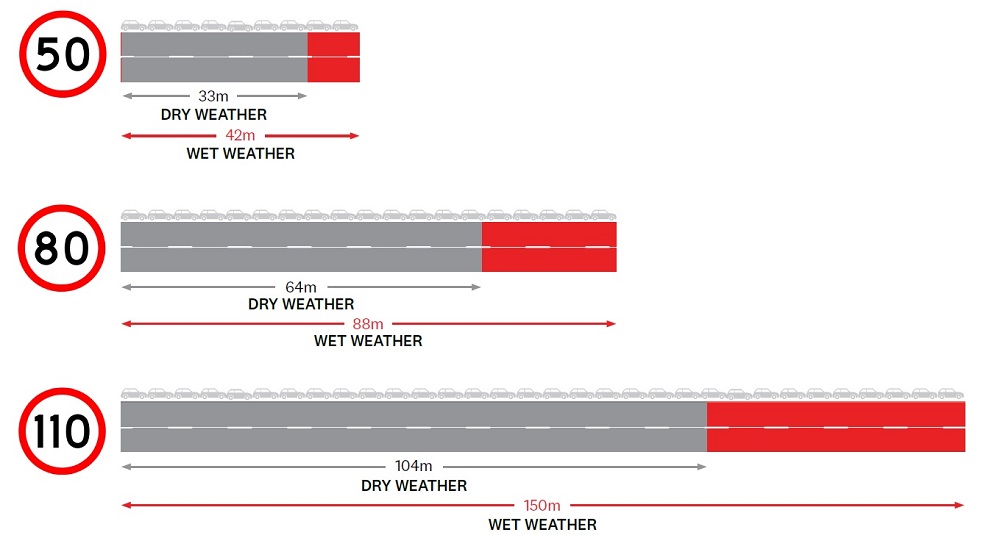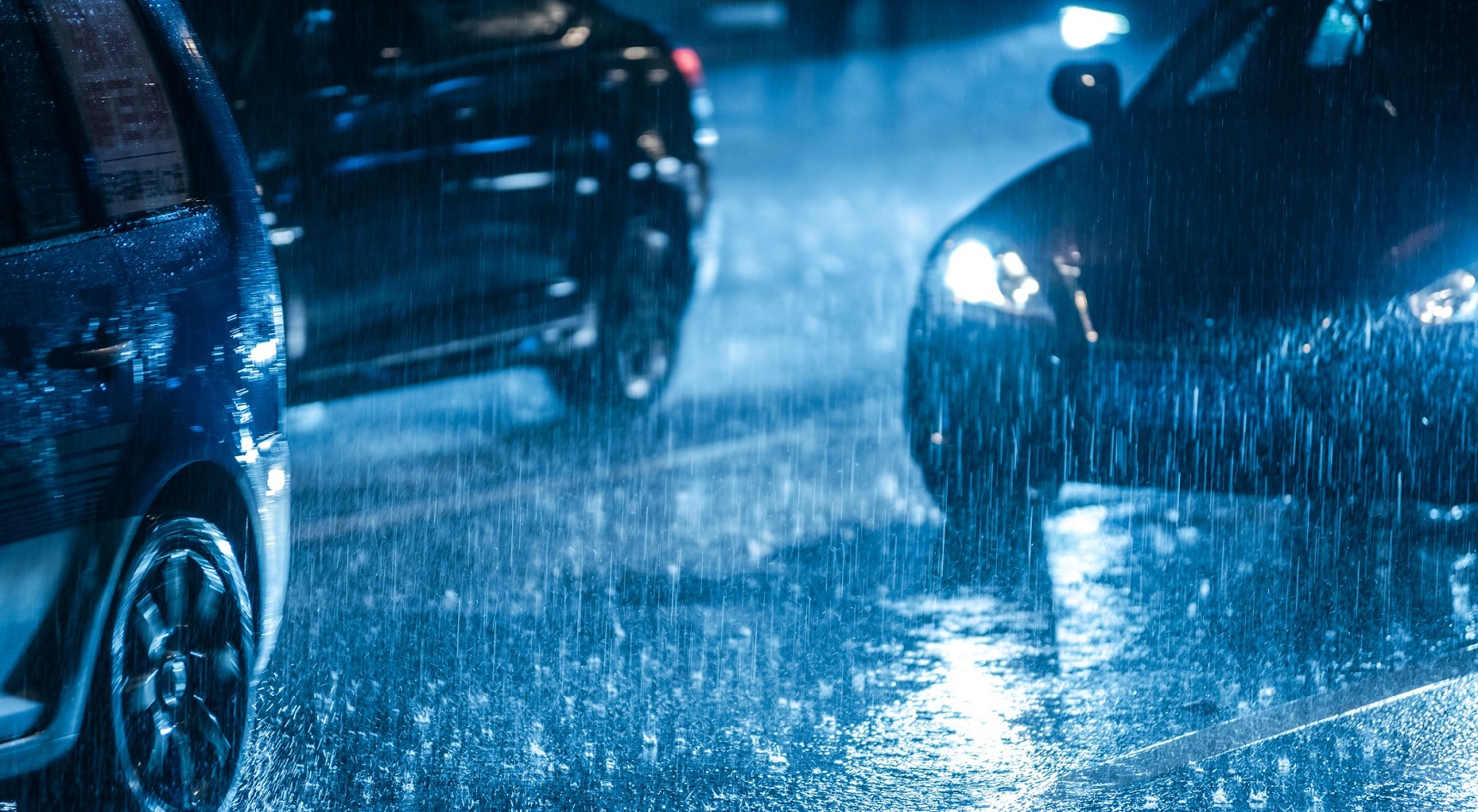The common driving mistake putting you at risk this winter
 Despite a drop in traffic due to COVID-19, latest police figures reveal an increase in motorists tailgating.
The recently released figures show last year, 1403 motorists were fined a total of $582,630 for tailgating, compared to 1386 in 2019, with fines totalling $558,160.
But it’s not just a fine you risk when tailgating, especially when roads are wet.
An RAA study showed an alarming difference between wet and dry stopping times, highlighting the importance of keeping your distance.
According to the study, if you need to stop for an emergency at 110km/h on a dry road, it will take up to 104m. This includes an average reaction time of 1.5 seconds before you actually begin braking. Do the same in wet weather, and you’ll travel up to 150m before coming to a halt. That’s an extra 46m – nearly the length of an Olympic swimming pool.
“In wet weather, stopping times drastically increase no matter what speed you’re travelling,” says RAA Senior Manager of Safety and Infrastructure, Charles Mountain.
“Naturally, high speeds pose greater risks, but even at slower speeds, there are potentially catastrophic consequences.”
According to RAA’s road safety calculations, if you’re travelling just 50km/h, it’ll take an extra 9m to stop in the wet. This may not seem like a lot, but it’s an increase of 29% compared to dry conditions.
At 80km/h, this increase blows out to 37% and at 110km/h it’s a whopping 44%.
Despite a drop in traffic due to COVID-19, latest police figures reveal an increase in motorists tailgating.
The recently released figures show last year, 1403 motorists were fined a total of $582,630 for tailgating, compared to 1386 in 2019, with fines totalling $558,160.
But it’s not just a fine you risk when tailgating, especially when roads are wet.
An RAA study showed an alarming difference between wet and dry stopping times, highlighting the importance of keeping your distance.
According to the study, if you need to stop for an emergency at 110km/h on a dry road, it will take up to 104m. This includes an average reaction time of 1.5 seconds before you actually begin braking. Do the same in wet weather, and you’ll travel up to 150m before coming to a halt. That’s an extra 46m – nearly the length of an Olympic swimming pool.
“In wet weather, stopping times drastically increase no matter what speed you’re travelling,” says RAA Senior Manager of Safety and Infrastructure, Charles Mountain.
“Naturally, high speeds pose greater risks, but even at slower speeds, there are potentially catastrophic consequences.”
According to RAA’s road safety calculations, if you’re travelling just 50km/h, it’ll take an extra 9m to stop in the wet. This may not seem like a lot, but it’s an increase of 29% compared to dry conditions.
At 80km/h, this increase blows out to 37% and at 110km/h it’s a whopping 44%.
Relationship between speed and stopping distance*

*stopping distance = distance travelled while perceiving/reacting to the hazard + distance travelled while actually braking.
Calculations also showed a car driving on a wet road travels at alarmingly high speeds long after a car driving on a dry road has come to a complete stop. Here’s an example: a car on a wet road and a car on a dry road hit the brakes at 50km/h. After the car on the dry road has come to a complete stop, the car on the wet road is still travelling 33km/h. For vulnerable road users like pedestrians and cyclists, a collision at 33km/h could prove fatal. Ramp the speed up to 80km/h, and the car on the wet road will be travelling 52km/h after the car on the dry road has stopped. Mr Mountain says these findings should be a reminder for all motorists to adjust their driving to the weather conditions. “Motorists should leave a greater space between themselves and the vehicle in front in these conditions,” he says. “Drivers should be aware that pedestrians and cyclists can be harder to detect when it’s raining.” Motorists should keep in mind that their make of car and tyre quality can impact stopping distances as well.
Motorists need to adjust their driving to the weather conditions. Image: Getty

